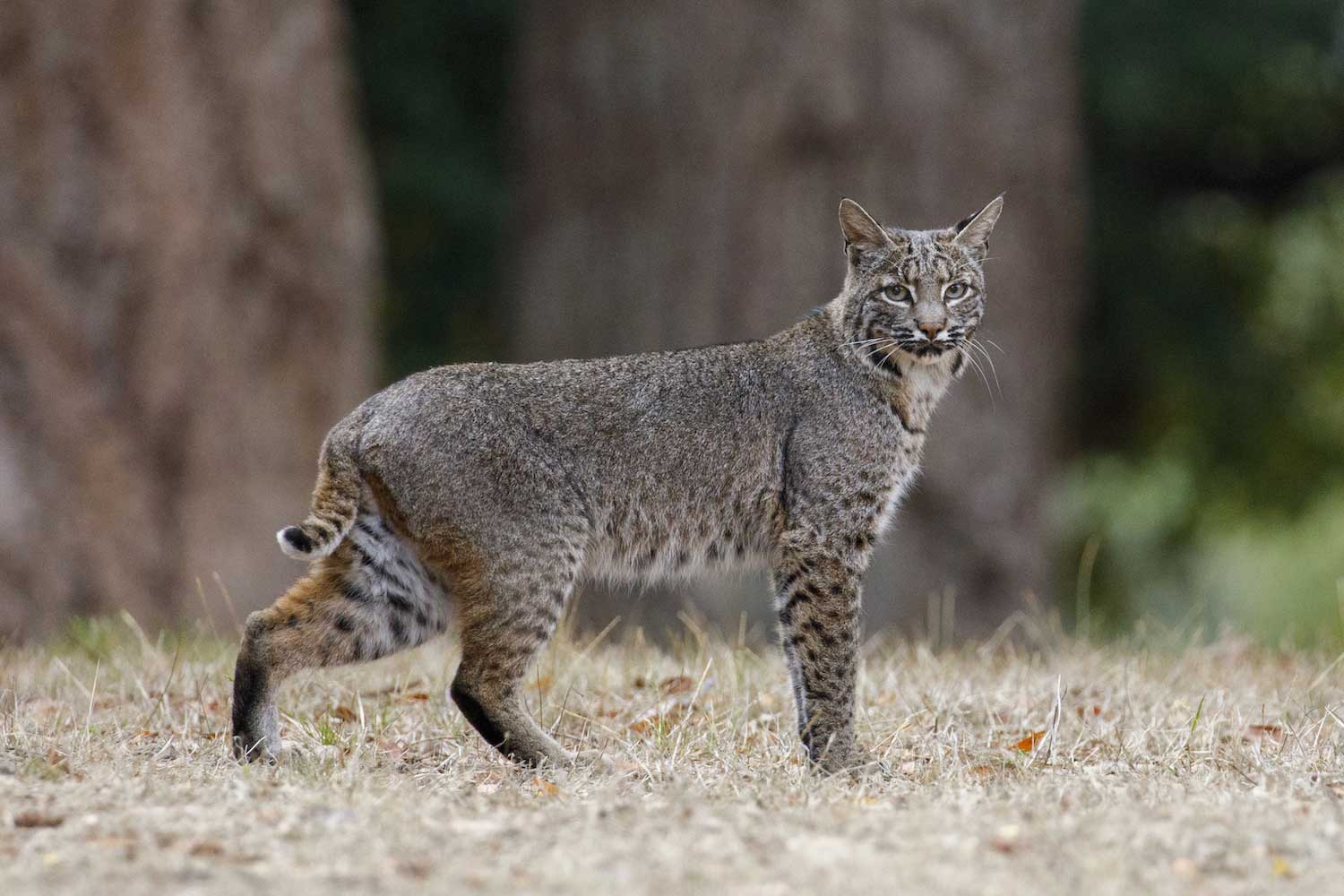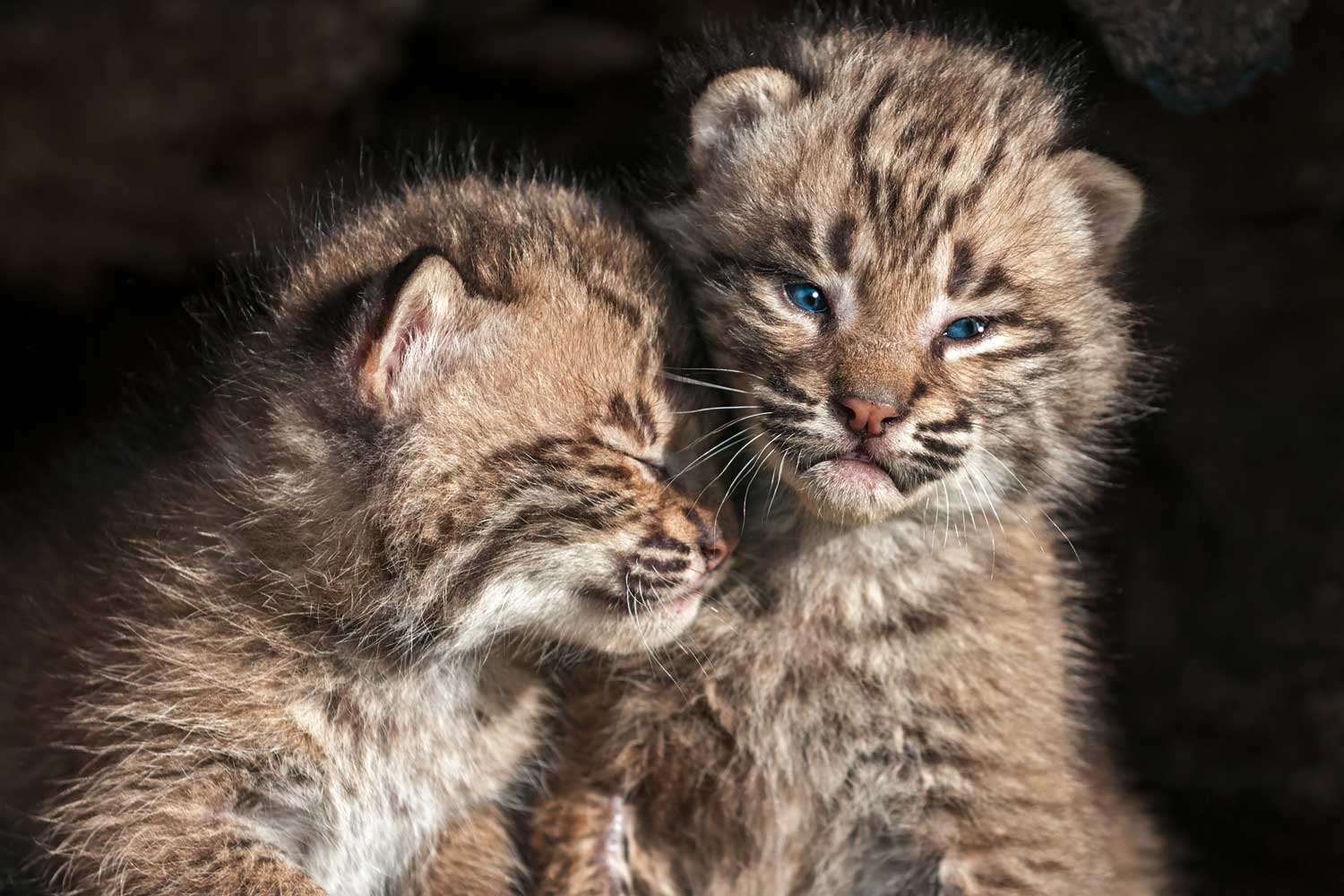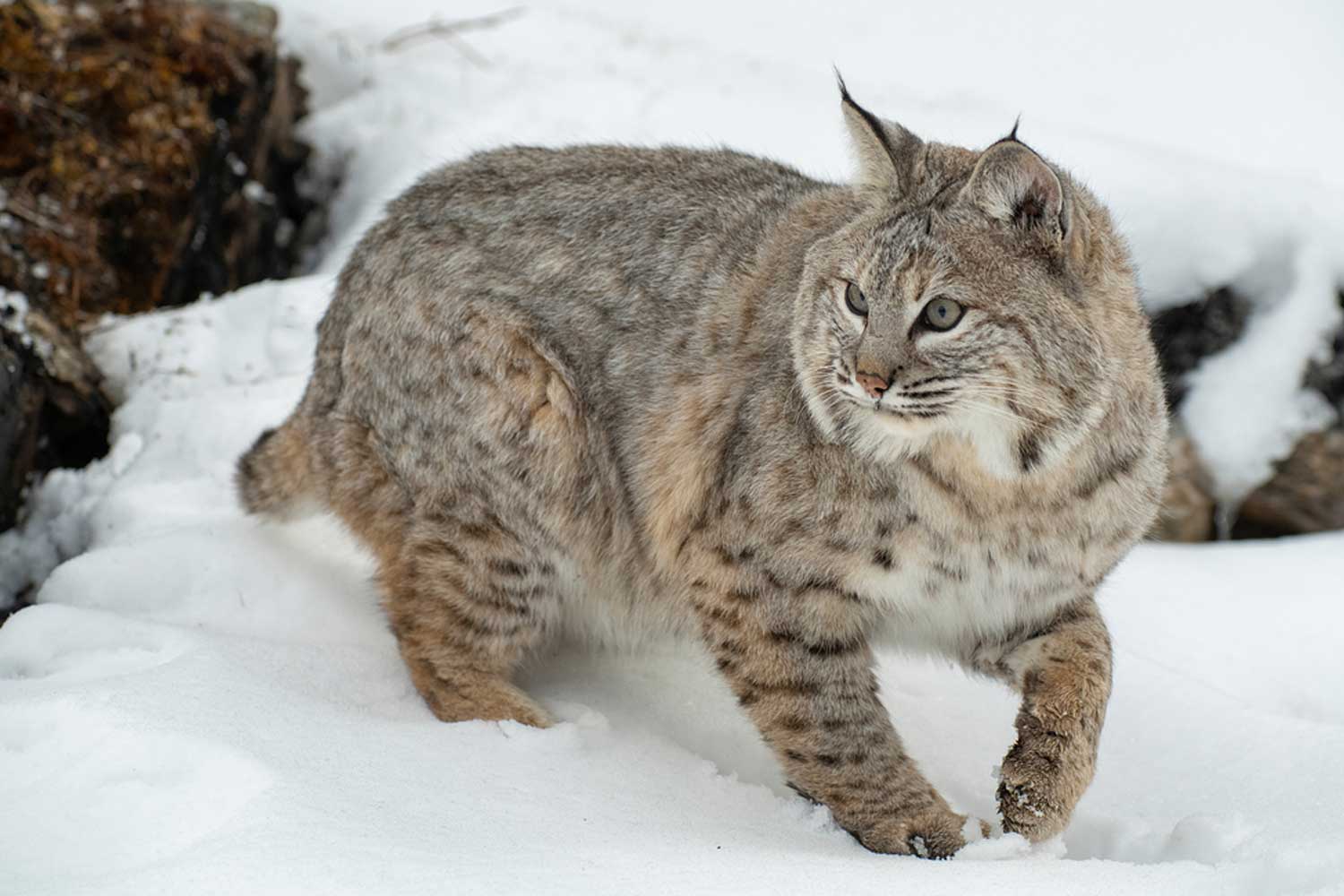Five facts about stealthy, solitary bobcats

The world is home to 40 wildcat species, but only one, the bobcat, lives in Illinois, and most people aren't aware of its presence, thinking of wildcats as roaming in the mountain regions of the west and southwest.
The bobcat does live in the west and southwest. In fact, it lives across the entire United States and much of Canada and Mexico, according to Animal Diversity Web. However, they are more common in the southeastern states than they are in the west.
While bobcats do live across Illinois, they are more common in the southern part of the state, Wildlife Illinois reports. They were nearly eliminated from Illinois in the 1990s, but their population is estimated at about 5,000 today. They can live in many types of habitat, but they prefer forested areas with a dense understory that are adjacent to fields and open areas where they can hunt.
These cats go by many names and are sometimes referred to as wildcats, bay lynxes and lynx cats, according to the San Diego Zoo. Read on to learn more about them.
They look a lot like our pet cats
No one would confuse a tiger or a mountain lion for a house cat, but bobcats actually do look a lot like many of our domesticated cats. Despite their sometimes similar look, bobcats are about twice the size, according to National Geographic. If size isn't enough of an identifying feature, look at their tails and ears. Bobcats are named for their short, bobbed tails, which are black at the tip. They also have tufts of black fur coming off the top of their ears.
House cats vary greatly in size, depending on their species and lifestyle, but very few reach a size at which they might be confused with a bobcat. The wildcats typically weigh between 11 pounds and 30 pounds and are between 26 inches and 41 inches long, National Geographic reports. Their bobbed tails add between 4 inches and 7 inches to their length.
They are often misidentified
Thanks to their size, you aren't likely to mistake a bobcat for a house cat despite their similar appearances, but bobcats do often get mistaken for other wildcats, namely the Canadian lynx. Some of the confusion is understandable. After all, bobcats are a type of lynx, according to the San Diego Zoo. Plus, all lynxes — there are four species in all — have short, bobbed tails and tufts of black fur on their ears.
Northern Illinois is not included in the Canadian lynx's range, which includes much of Canada and the northern United States, but the two cats' ranges do overlap in many places. In areas where they coexist, you can tell the difference based on a few physical features. First, a lynx has mostly uniform grayish-brown fur compared with a bobcat's more spotted and streaked coat, according to the Vermont Fish and Wildlife Department. A lynx also has feet that are twice as large as a bobcat's and are shaped like snowshoes to help them maneuver across the snow-covered ground.
In addition to bobcats and Canadian lynxes, the other lynx species are the Eurasian lynx and the Iberian lynx, or Spanish lynx. The Eurasian lynx is the most populous and widespread, living in more than 40 countries in Europe, northern Asia and the Middle East, while the Iberian lynx is the most rare of the lynxes and among the most rare of all wildcats, living only in Spain and Portugal, the San Diego Zoo reports.
They are speedy, but not for long distances
Most of us learn as kids that cheetahs are the fastest land animal on Earth, able to run at speeds of between 50 mph and 80 mph! Bobcats aren't that fast, but they can run at speeds of up to 30 mph, National Geographic reports. And like cheetahs, bobcats can't sustain their speed for long, being only able to run fast for short sprints to chase prey or escape danger.
Speed isn't their only skill. They can climb trees, which they will do to get a better vantage point while on the hunt for a meal or to escape potential dangers, according to National Geographic. They are also good swimmers, although they'd rather be on land than in the water.
Although they can quickly jump into action to chase prey, they are quiet stalkers while they hunt. They can cover a lot of ground while hunting or patrolling their territory, sometimes as much as 7 miles at a stretch, the National Zoo reports. As they walk, their back feet hit the same spots as their front feet, which allows them to walk more quietly.
They are almost always alone
If you see a bobcat in the wild, it's a pretty sure bet there will be just one. Bobcats are territorial and live almost completely solitary lives, only coming together to mate, according to the Smithsonian's National Zoo and Conservation Biology Institute. Male bobcats have an established territory that overlaps with multiple females, and males will typically mate with multiple females. A male and a female will come together briefly to reproduce, but then will return to their solitary lifestyle.
Bobcats typically mate in late winter, and the kittens are born in spring, the National Zoo reports. Females find a secluded spot for a den, someplace like a tree cavity or a cave, and will give birth there to usually between two and four kittens. Once the kittens are born, the male leaves the den area but stays close by. The kittens will stick with their mother, traveling with her, until the winter mating season. Females will begin to mate when they are 1 year old, while males don't mate until they are 2.
They have clever coloration
A bobcat's fur is mostly buff or brown with black spots, and those spots help them blend in against the brush, rocks and vegetation in their habitat areas, according to the National Zoo. Other lynxes have brownish-gray coats lacking the spots bobcats have, but their fur, too, helps them blend in well in their habitat. In both cases, the camouflage of their fur allows them to stalk their preferred prey. In the case of bobcats, that's cottontail rabbits. Other lynxes are on the hunt for snowshoe hares.
The black spots on a bobcat's fur aren't the only way they use their fur to help them in their environment. They also have two small white spots on the backs of their ears, and it's thought that bobcat kittens use these spots to help follow their mothers, the National Zoo reports. Those spots are easier to see in dim light, allowing the kittens to keep their mother in sight. If a kitten falls too far behind, its mother can call to it and raise her tail, flashing a white underside that will be easier for them to see in darkness.








